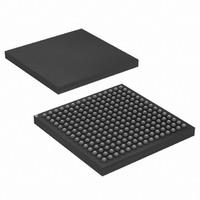AT91CAP7E-NA-ZJ Atmel, AT91CAP7E-NA-ZJ Datasheet - Page 431

AT91CAP7E-NA-ZJ
Manufacturer Part Number
AT91CAP7E-NA-ZJ
Description
MCU CAP7 FPGA 225LFBGA
Manufacturer
Atmel
Series
CAP™r
Specifications of AT91CAP7E-NA-ZJ
Core Processor
ARM7
Core Size
16/32-Bit
Speed
80MHz
Connectivity
EBI/EMI, FPGA, IrDA, SPI, UART/USART, USB
Peripherals
DMA, POR, PWM, WDT
Number Of I /o
32
Program Memory Size
256KB (256K x 8)
Program Memory Type
ROM
Ram Size
160K x 8
Voltage - Supply (vcc/vdd)
1.08 V ~ 1.32 V
Data Converters
A/D 8x10b
Oscillator Type
Internal
Operating Temperature
-40°C ~ 85°C
Package / Case
225-LFBGA
Processor Series
AT91Mx
Core
ARM7TDMI
Data Bus Width
32 bit
3rd Party Development Tools
JTRACE-ARM-2M, MDK-ARM, RL-ARM, ULINK2
Lead Free Status / RoHS Status
Lead free / RoHS Compliant
Eeprom Size
-
Lead Free Status / Rohs Status
Details
Available stocks
Company
Part Number
Manufacturer
Quantity
Price
- Current page: 431 of 520
- Download datasheet (11Mb)
31.3
31.3.1
31.3.2
31.3.3
8549A–CAP–10/08
Product Dependencies
I/O Lines
Power Management
Interrupt
For further details on the USB Device hardware implementation, see the specific Product Prop-
erties document.
The USB physical transceiver is integrated into the product. The bidirectional differential signals
DP and DM are available from the product boundary.
One I/O line may be used by the application to check that VBUS is still available from the host.
Self-powered devices may use this entry to be notified that the host has been powered off. In
this case, the pullup on DP must be disabled in order to prevent feeding current to the host. The
application should disconnect the transceiver, then remove the pullup.
DP and DM are not controlled by any PIO controllers. The embedded USB physical transceiver
is controlled by the USB device peripheral.
To reserve an I/O line to check VBUS, the programmer must first program the PIO controller to
assign this I/O in input PIO mode.
The USB device peripheral requires a 48 MHz clock. This clock must be generated by a PLL
with an accuracy of ± 0.25%.
Thus, the USB device receives two clocks from the Power Management Controller (PMC): the
master clock, MCK, used to drive the peripheral user interface, and the UDPCK, used to inter-
face with the bus USB signals (recovered 12 MHz domain).
WARNING: The UDP peripheral clock in the Power Management Controller (PMC) must be
enabled before any read/write operations to the UDP registers including the UDP_TXVC
register.
The USB device interface has an interrupt line connected to the Advanced Interrupt Controller
(AIC).
Handling the USB device interrupt requires programming the AIC before configuring the UDP.
AT91CAP7E
431
Related parts for AT91CAP7E-NA-ZJ
Image
Part Number
Description
Manufacturer
Datasheet
Request
R

Part Number:
Description:
Customizable Microcontroller
Manufacturer:
ATMEL Corporation
Datasheet:

Part Number:
Description:
DEV KIT FOR AVR/AVR32
Manufacturer:
Atmel
Datasheet:

Part Number:
Description:
INTERVAL AND WIPE/WASH WIPER CONTROL IC WITH DELAY
Manufacturer:
ATMEL Corporation
Datasheet:

Part Number:
Description:
Low-Voltage Voice-Switched IC for Hands-Free Operation
Manufacturer:
ATMEL Corporation
Datasheet:

Part Number:
Description:
MONOLITHIC INTEGRATED FEATUREPHONE CIRCUIT
Manufacturer:
ATMEL Corporation
Datasheet:

Part Number:
Description:
AM-FM Receiver IC U4255BM-M
Manufacturer:
ATMEL Corporation
Datasheet:

Part Number:
Description:
Monolithic Integrated Feature Phone Circuit
Manufacturer:
ATMEL Corporation
Datasheet:

Part Number:
Description:
Multistandard Video-IF and Quasi Parallel Sound Processing
Manufacturer:
ATMEL Corporation
Datasheet:

Part Number:
Description:
High-performance EE PLD
Manufacturer:
ATMEL Corporation
Datasheet:

Part Number:
Description:
8-bit Flash Microcontroller
Manufacturer:
ATMEL Corporation
Datasheet:

Part Number:
Description:
2-Wire Serial EEPROM
Manufacturer:
ATMEL Corporation
Datasheet:











